The following are brief profiles of tire-derived aggregate (TDA) projects completed throughout California. Technical and financial support for these projects was provided by CalRecycle through its TDA technical assistance contractor.
#
Badlands Landfill (Riverside County)
Tire-Derived Aggregate as Landfill Gas Collection Application
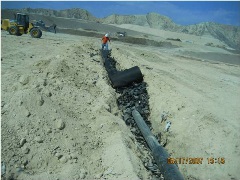 The California Integrated Waste Management Board (CIWMB) (now the Department of Resources Recycling and Recovery, or CalRecycle) and the County of Riverside Waste Management Board partnered to demonstrate the potential beneficial use of tire-derived aggregate (TDA) as a substitute for gravel in the gas collection system at the Badlands Sanitary Landfill located in Riverside County.
The California Integrated Waste Management Board (CIWMB) (now the Department of Resources Recycling and Recovery, or CalRecycle) and the County of Riverside Waste Management Board partnered to demonstrate the potential beneficial use of tire-derived aggregate (TDA) as a substitute for gravel in the gas collection system at the Badlands Sanitary Landfill located in Riverside County.
This project incorporated approximately 275 tons of Type A TDA as a substitute for gravel in three horizontal gas collection trenches, and is being compared with two conventional gravel-filled gas collection trenches that were constructed at the same time.
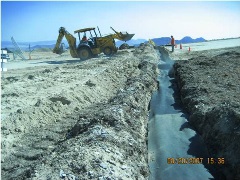 The trenches were excavated and approximately six inches of TDA was placed on the bottom of the trenches as a base material for the gas collection pipe.
The trenches were excavated and approximately six inches of TDA was placed on the bottom of the trenches as a base material for the gas collection pipe.
After the pipe was in place, an additional 12 inches of TDA was placed over the pipe. The TDA was then covered with a geotextile material and cover soil was placed to fill the remaining portion of the trench.
Flow data comparing the gravel and TDA trenches indicated that the TDA “hydraulically” performs as good or better than typical gravel trenches. Gas constituent analysis performed indicates that the TDA trenches perform the same or better than typical gravel gas collection trenches.
For more information contact: Tire Management Program Hotline, WasteTires@calrecycle.ca.gov
Confusion Hill (Mendocino County)
Tire-Derived Aggregate as Landslide Remediation/Slope Stabilization
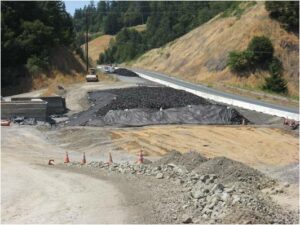
TDA wrapped in geotextile fabric prior to soil placement.
In 2009 the California Department of Transportation (Caltrans) completed the lightweight fill project located at Confusion Hill on U.S. 101 near Piercy in Mendocino County. The project used tire-derived aggregate (TDA) for this rockslide/road repair project.
The rockslides have been occurring for thousands of years and have been impacting the highway for the last 17 years with roadway slip-outs occurring more frequently in recent years. The size of this rockslide is approximately 3,000 feet wide and 1,100 feet high.
Frequent road closures due to falling debris and slope movement were a constant maintenance problem. In 2001 there were $3.2 million in roadway stabilization costs. The purpose of this project was to provide a reliable route at the Confusion Hill slide area and keep U.S. 101 open to vehicular traffic.
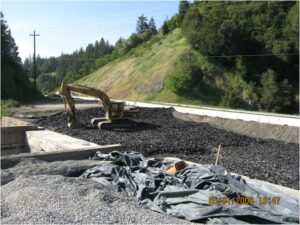
Final TDA placement.
The new route bypasses the rockslide area through the use of two new bridges. The north bridge embankment had an existing underground drainage structure which, it was determined, could not handle any additional load which would result from the added height of the north bridge embankment.
To prevent possible damage to the subsurface structure, a lightweight fill material was needed. TDA was chosen as the fill material for the project because of its light weight and cost-effectiveness. The existing fill material over the structures was removed and replaced with the lightweight TDA material. The project used approximately 270,000 waste tires and was completed in 2009.
For more information contact: Tire Management Program Hotline, WasteTires@calrecycle.ca.gov
Dixon Landing (Santa Clara County)
Tire-Derived Aggregate as Embankment Fill
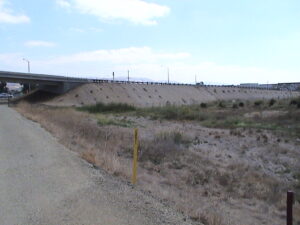
Final TDA-filled embankment.
Final TDA-filled embankment.
This project is located in Milpitas, California, at the intersection of Interstate 880 (I-880) and Dixon Landing Road. The site is underlain by about 30 feet of San Francisco Bay mud.
Due to the poor strength of the bay mud, lightweight fill was specified for most fill sections to reduce total settlement. The project owner is the California Department of Transportation (Caltrans). Two sources of lightweight fill were considered: tire-derived aggregate (TDA) and lightweight aggregate
TDA was chosen because it had a lower unit weight (in-place unit weight of 50 pounds per cubic foot) than the lightweight aggregate (unit weight of about 60 pounds per cubic foot) and because it was less expensive.
TDA was supplied through an interagency agreement between the California Integrated Waste Management Board (CIWMB) (now the Department of Resources Recycling and Recovery, or CalRecycle)–and the California Department of Transportation (Caltrans). Under the agreement, CIWMB was responsible for procuring the TDA and having it delivered to the site. Some of the TDA was delivered in advance and stockpiled at a nearby landfill to facilitate delivery in this traffic-congested area. In total, 6,627 tons or 662,700 passenger tire equivalents (PTE) of TDA was used for this project.

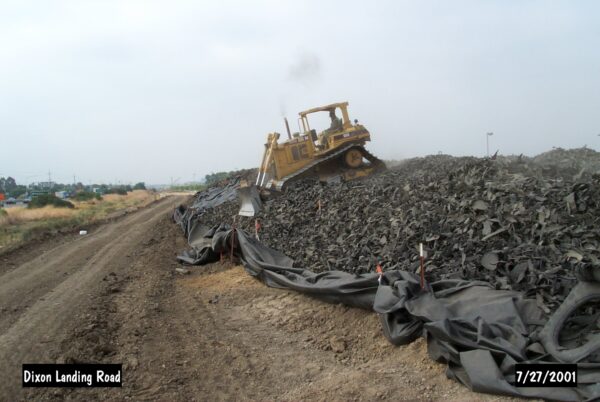
Project design. TDA was placed with conventional construction equipment in two layers up to 10 feet thick. The layers were separated by 3 feet of low-permeability soil. The embankment applied a vertical stress of 2,250 pounds per square foot (psf) to the foundation soil compared to 3,750 psf for an embankment constructed with conventional earth fills. This is a 40 percent reduction in vertical stress.
Cost savings. This project used approximately 660,000 waste tires and saved Caltrans $477,000 compared to using lightweight aggregate for the project. This shows that TDA can be a cost-effective alternative to lightweight aggregate.
For more information contact: Tire Management Program Hotline, WasteTires@calrecycle.ca.gov
Geysers Road (Sonoma County)
Tire-Derived Aggregate as Landslide Remediation/Slope Stabilization
The Geysers Road Project site is located in Sonoma County southeast of the town of Geyserville and approximately 1.7 miles north of the intersection of Geysers Road and Red Winery Road. In 2006, approximately 250 feet of Geysers Road failed due to a landslide, requiring the slope and roadway to be reconstructed. The landslide was caused by a combination of loose native soil and excess ground moisture (saturated conditions).
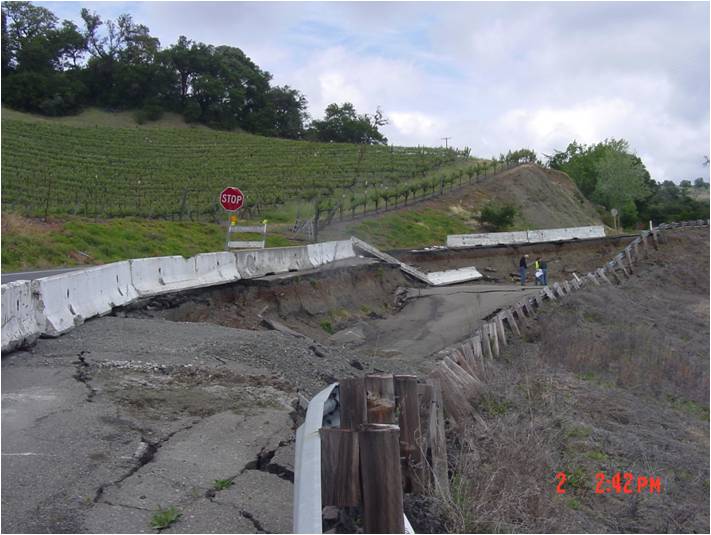
Geysers Road failed section.
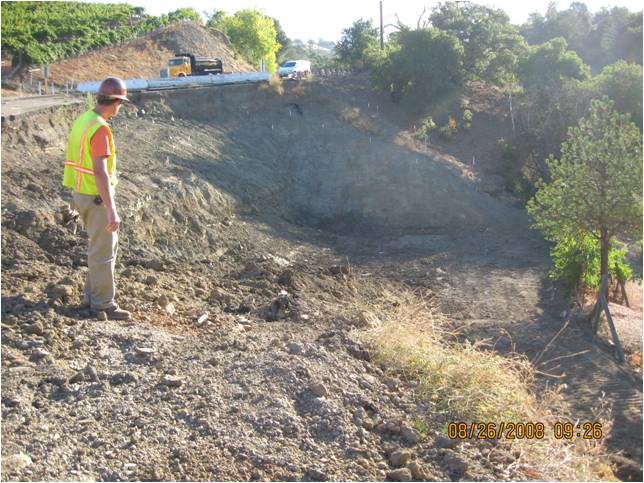
Excavation of failed road section.
Sonoma County had initially designed the repair of the landslide-damaged road section using a traditional soil backfill approach. During the summer of 2008, the California Integrated Waste Management Board (CIWMB) (now the Department of Resources Recycling and Recovery, or CalRecycle), working with Sonoma County, provided the tire-derived aggregate (TDA) material, design and construction management services to redesign and then rebuild the road section using TDA as a lightweight backfill.
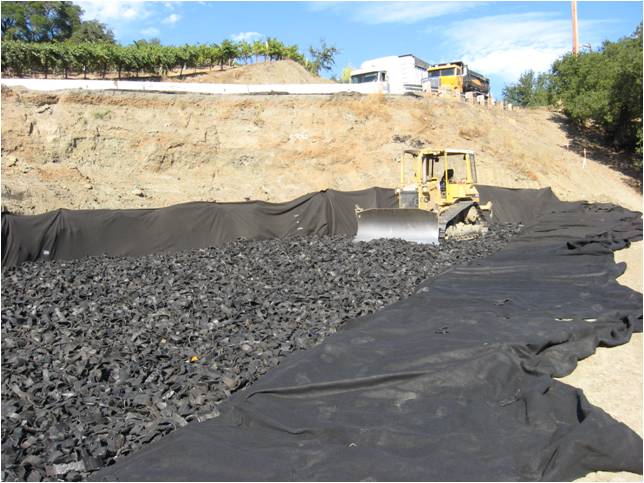
TDA placement over geotextile fabric.
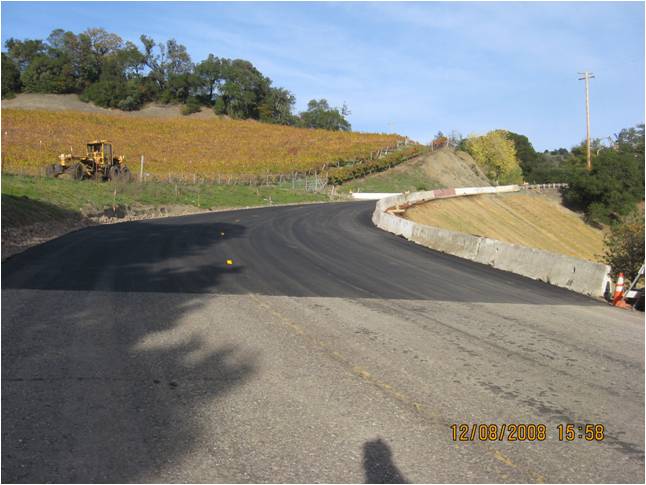
Completed TDA road repair project.
This resulted in a smaller excavation and a lower-cost repair. This project used approximately 150,000 waste tires and resulted in an overall cost savings to the county of $370,000.
For more information contact: Tire Management Program Hotline, WasteTires@calrecycle.ca.gov
Los Angeles County Area Landfill (Los Angeles County)
Tire-Derived Aggregate as Landfill Gas Collection Application
In this landfill application tire-derived aggregate (TDA) has been used in the landfill gas collection trenches. The landfill gas collection system used the same pipe that would normally be used. However, instead of using rock aggregate, Type A TDA was called out as a replacement. Installation began with the excavation of a 3-by-3-foot trench into existing waste; the waste was immediately relocated to the active landfill area.
Approximately six inches of TDA was placed on the bottom of the trench as a base material for the pipe. After the landfill gas collection pipe was in place, an additional 12 inches of TDA was placed over the pipe.
The TDA was covered with a geotextile material and cover soil was placed to fill the remaining portion of the trench.
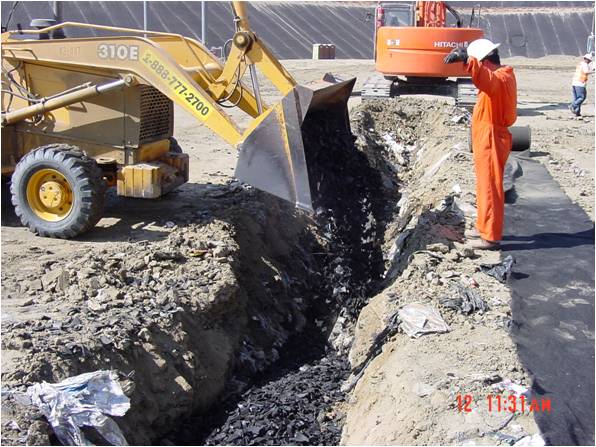
TDA placement in gas collection trench.
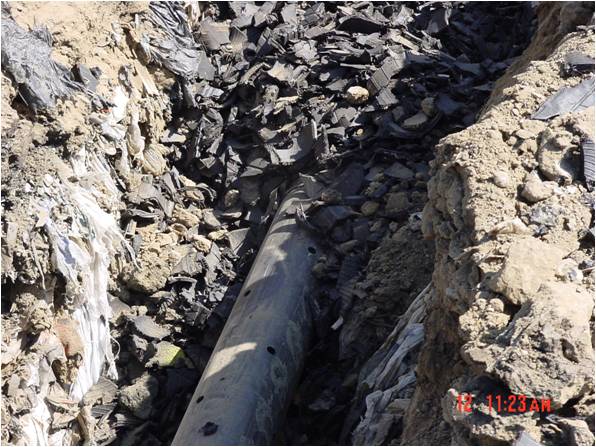
Gas collection pipeline covered in TDA material.
For more information contact: Tire Management Program Hotline, WasteTires@calrecycle.ca.gov
Marina Drive (Mendocino County)
Tire-Derived Aggregate as Landslide Remediation/Slope Stabilization
The California Integrated Waste Management Board (CIWMB) (now the Department of Resources Recycling and Recovery, or CalRecycle) teamed with the Mendocino County Department of Transportation to repair 160 feet of roadway along Marina Drive near the City of Ukiah.
The project involved removing the original soil fill used to construct the road and replacing it with the lighter tire-derived aggregate (TDA). CIWMB contracted with KENNEC, Inc. to develop the design and specifications for this project.
Utilizing the following resources, the engineer developed five construction-level drawings for the site. These drawings take into account the current and proposed conditions, excavation and fill (TDA) materials associated with the road construction, and alignment and drainage.
- Existing county investigations.
- Neighboring subdivision grading plans and topography maps.
- A geotechnical study by Geotechnical Consultants, Inc.
- The results from the hydrology analysis.
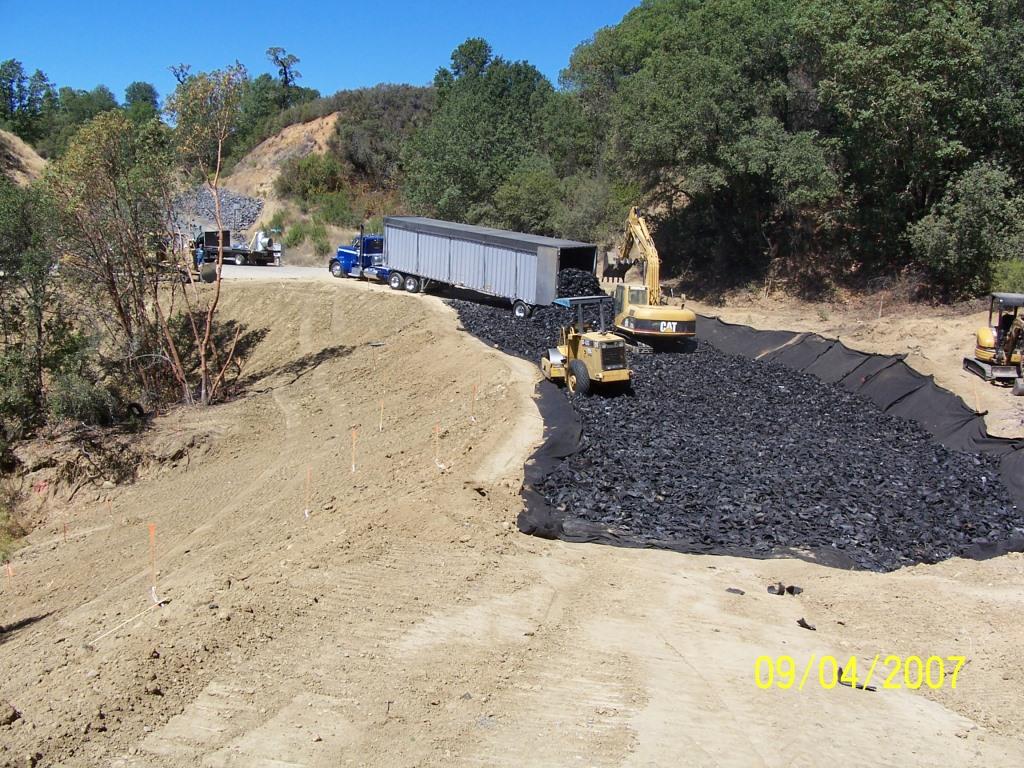
TDA delivery and placement.
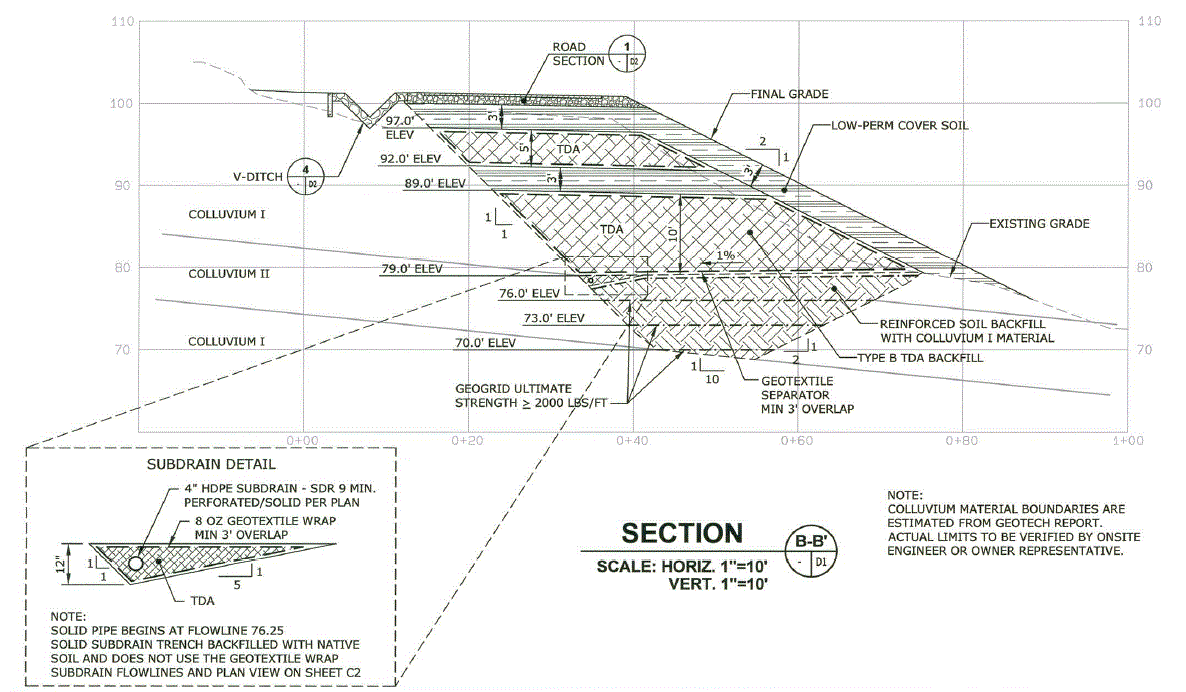
Cross section of TDA slide repair design showing two layers of Type B TDA fill above reinforced backfill soil with colluvium material. The TDA layers and final grade are covered by 3-foot layers of low permeability cover soil.
Through site visits and hydrology analysis the engineer developed a surface water management design for the Marina Drive slide repair. The storm water management system was designed to optimize the site’s characteristics (e.g., topography, soil logistics, and hydrology), with consideration to TDA technology and the proposed final condition of the site.
This project used approximately 133,000 waste tires and resulted in an overall cost savings to the county of $740,000.

Final cover soil placement over TDA fill.
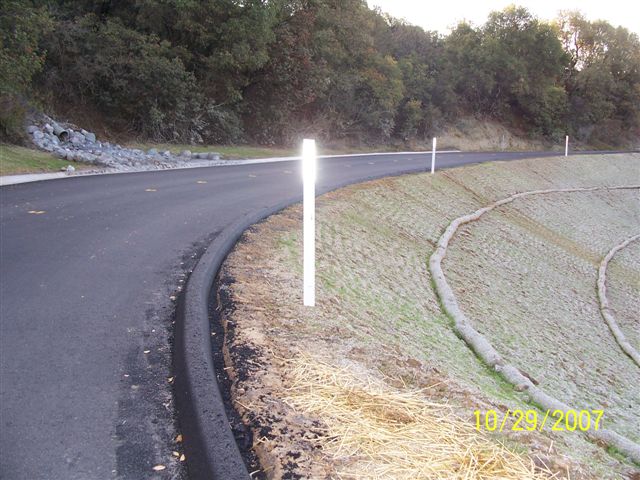
Completed TDA repair project.
VTA Vasona Light Rail (Santa Clara County)
Tire-Derived Aggregate as Vibration Mitigation
The vibration produced by the operation of rail rapid transit systems and railroads as measured at nearby buildings is significantly less than that required to damage a building, but can still be very annoying.
Reducing ground-borne vibration for rapid transit tracks usually takes the form of some type of “soft” or “special” track fastener, or a type of isolation system built under or incorporated as part of the track structure. The two types of track isolation systems most similar to the use of tire-derived aggregate (TDA) as an isolating medium are the ballast mat and the very costly floating slab track bed. Due to the large abundance of scrap tires which can be transformed into an energy-absorbing TDA material, an investigation was undertaken to determine the vibration attenuation properties of TDA and how TDA could be used to help attenuate ground-borne vibration.
In 1999-2000 two field tests were performed to determine the vibration attenuation and damping properties of TDA for potential use beneath rail lines and other applications.
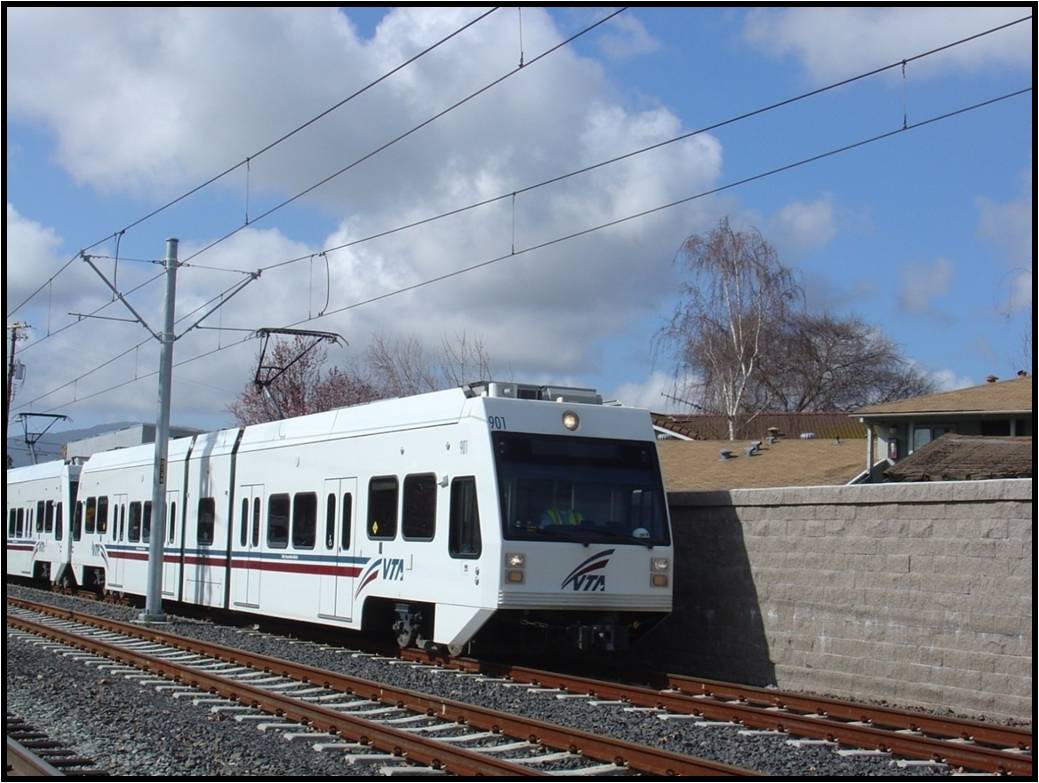
Completed VTA Vasona TDA project.
The first set of tests was performed at the Chicago Grade Landfill using two test pads consisting of a control section and three test sections. The second set of tests was performed using a short test and control section at the Santa Clara Valley Transportation Authority’s Younger Yard where the shredded tires were installed under ballast and tie rail transit track.
These tests confirmed that the use of a one-foot thick layer of tire shreds located beneath the sub-ballast, ballast layers and ties of a light rail track section was an effective vibration mitigation measure. The effectiveness of this new technology fell between that of a conversional ballast mat section and that of a floating slab track bed. Based on these findings, the Valley Transit Authority (VTA) in San Jose chose to construct four sections of track, nearly 3000 feet, with the new TDA vibration mitigation underlayment, during its Vasona Light Rail Extension Project in 2001.
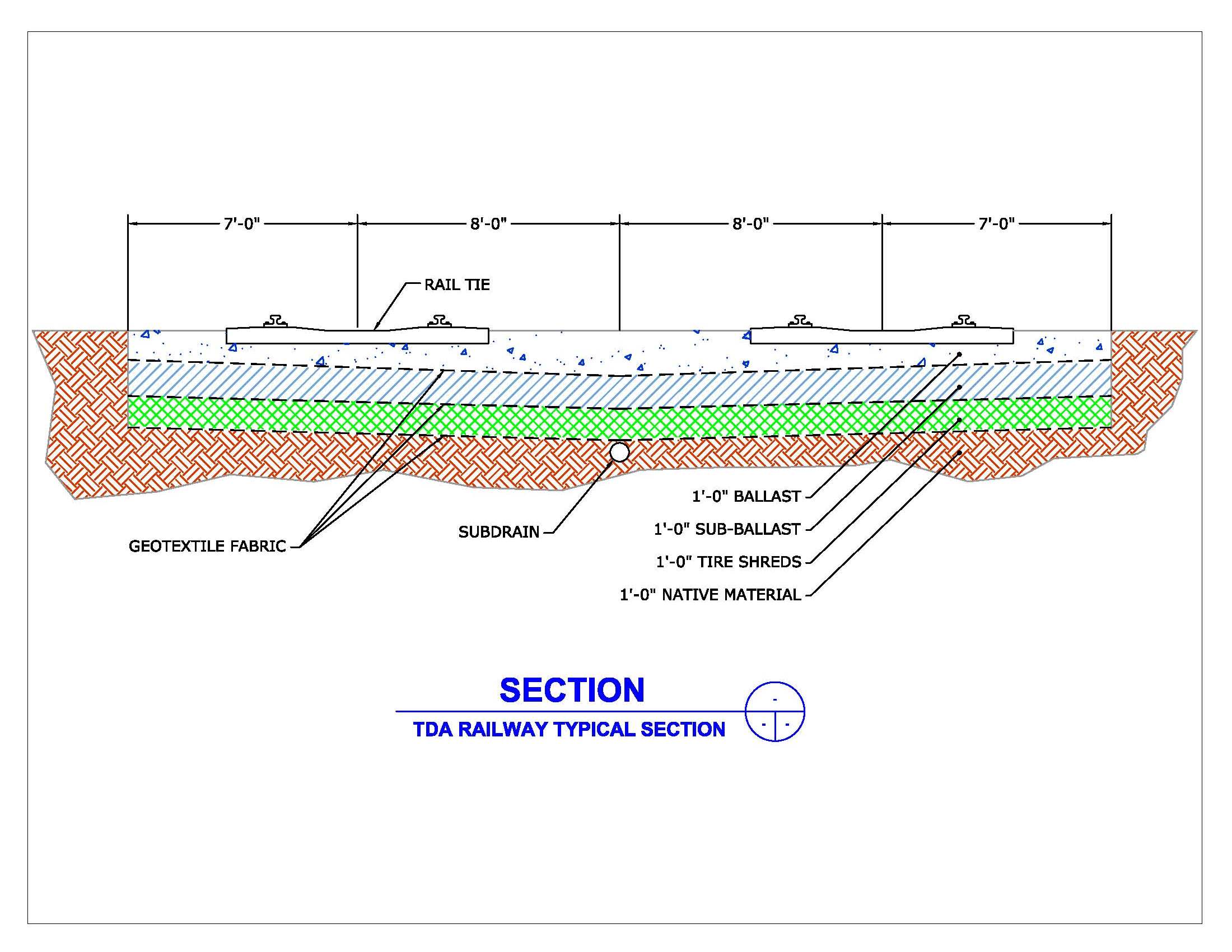
Cross section of TDA rail design showing rail ties supported by one-foot thick layers of ballast, sub-ballast, and tire shreds, separated by geotextile fabric membranes.
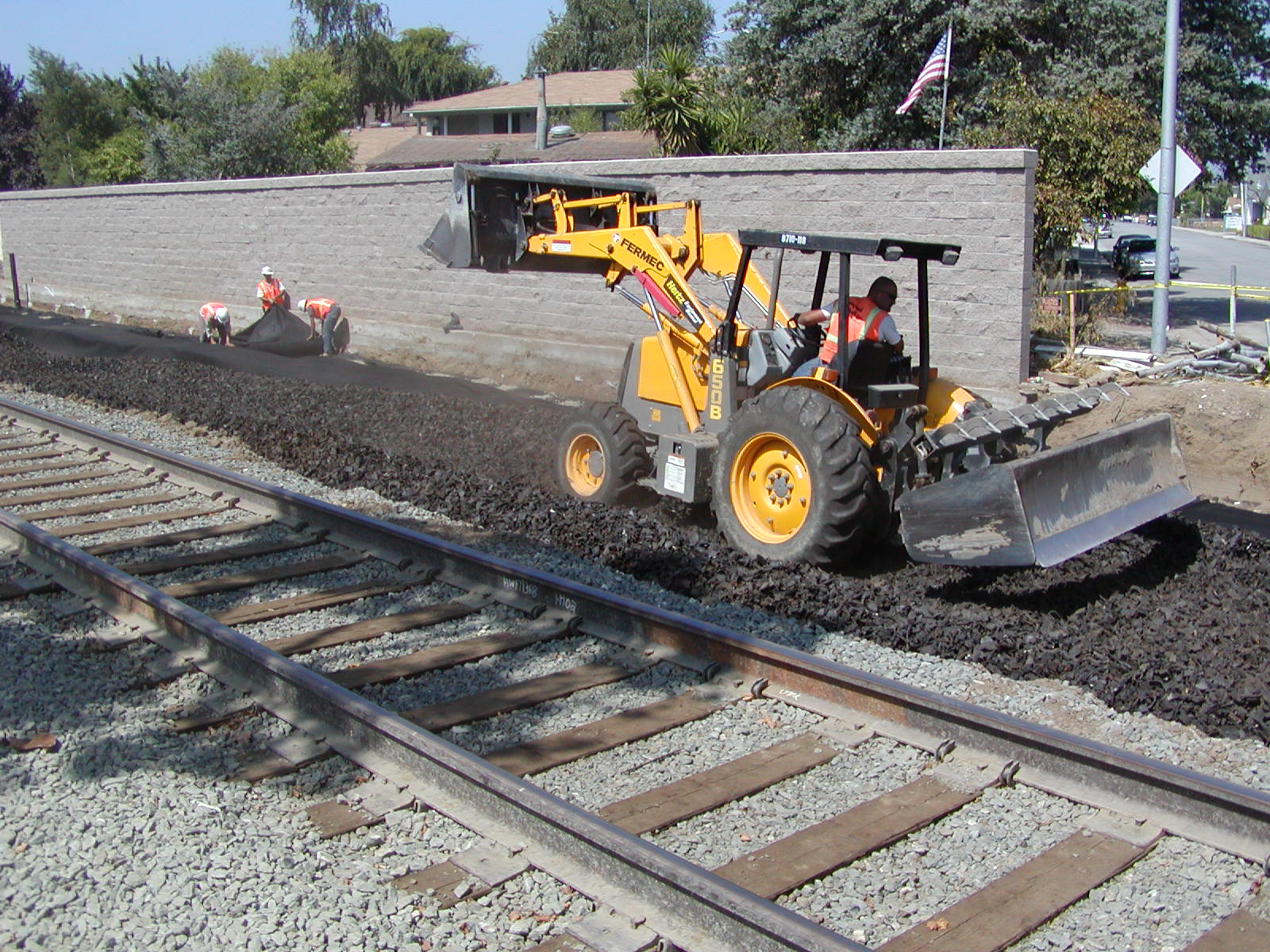
TDA placement alongside tracks.
Retaining Wall Projects (Riverside County)
Tire-Derived Aggregate as Retaining Wall Backfill
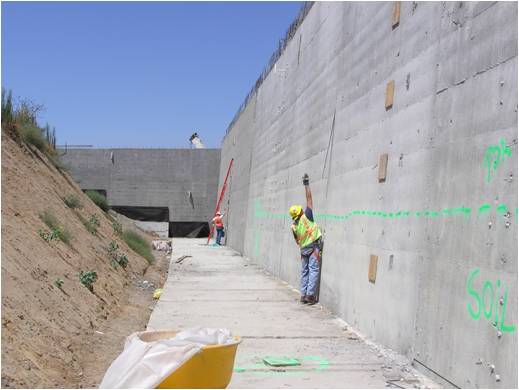
Completed Wall 207 before placement of TDA backfill.
The California Integrated Waste Management Board (CIWMB) (now the Department of Resources Recycling and Recovery, or CalRecycle) partnered with the California Department of Transportation (Caltrans) to conduct two retaining wall pilot projects.
The first was the Wall 119 Project and the second was the Wall 207 Project. Wall 119 is located on the westbound side of Route 91 and is part of the overall Highway 60/91/215 Freeway Improvement Project. Wall 207 is located on the east side of the northbound lanes of Interstate 215 at the Chicago Avenue overpass.
Both Walls 119 and 207 were Type 1 retaining walls that had been specified as part of the widening project for Route 91. Though the joint venture between Caltrans and the CIWMB, Wall 119 was constructed in 2003 and Wall 207 was constructed in 2006. Both projects used tire-derived aggregate (TDA) as an alternative to a conventional soil backfill material.
Using standard construction equipment, 837 tons of TDA (equivalent to 83,700 waste tires) was installed behind approximately 300 lineal feet of Wall 119 and 1,410 tons of TDA (equivalent to 141,000 waste tires) was installed behind approximately 300 lineal feet of Wall 207.
To prevent soil infiltration into the TDA, a geotextile wrap was incorporated into the TDA placement. Two feet of cover soil was placed over the TDA backfill.
The purpose of these projects was to demonstrate that the soil pressure exerted on a retaining wall could be reduced by 30 percent by placing TDA as a lightweight backfill material behind the wall. Both projects used TDA as a backfill material behind a standard Type 1 retaining wall. Monitoring instruments were installed in the walls during construction and measurements were taken to determine the reaction of the wall as compared to a typical retaining wall constructed with soil backfill.
The pilot project demonstrated that by using the TDA backfill, the pressure on the wall is reduced thereby allowing for an alternate wall design to be used which uses less concrete and/or steel and significantly reduces construction costs.
Instrumentation
Both walls were constructed with four instrumentation measurement stations that included stress/strain gauges, pressure sensors, temperature sensors and tilt meters. Three stations measure TDA-related values and the fourth station measures soil values as a comparative data point. Data loggers record the data from the instruments which is later down loaded to a laptop computer for analysis.
Pressure Cell Installation
The pressure cells were installed in custom concrete block casings prior to installation into the retaining wall. The retaining walls were poured in sections, as is typical of this type of retaining wall
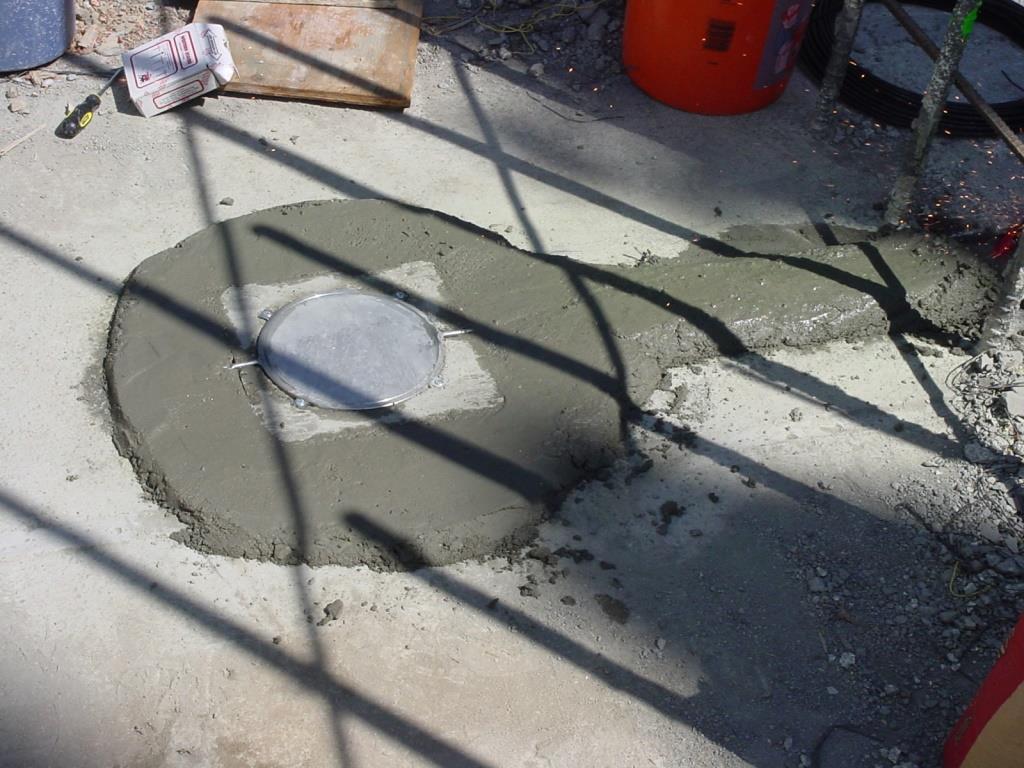
Pressure cell placed in wall foundation.
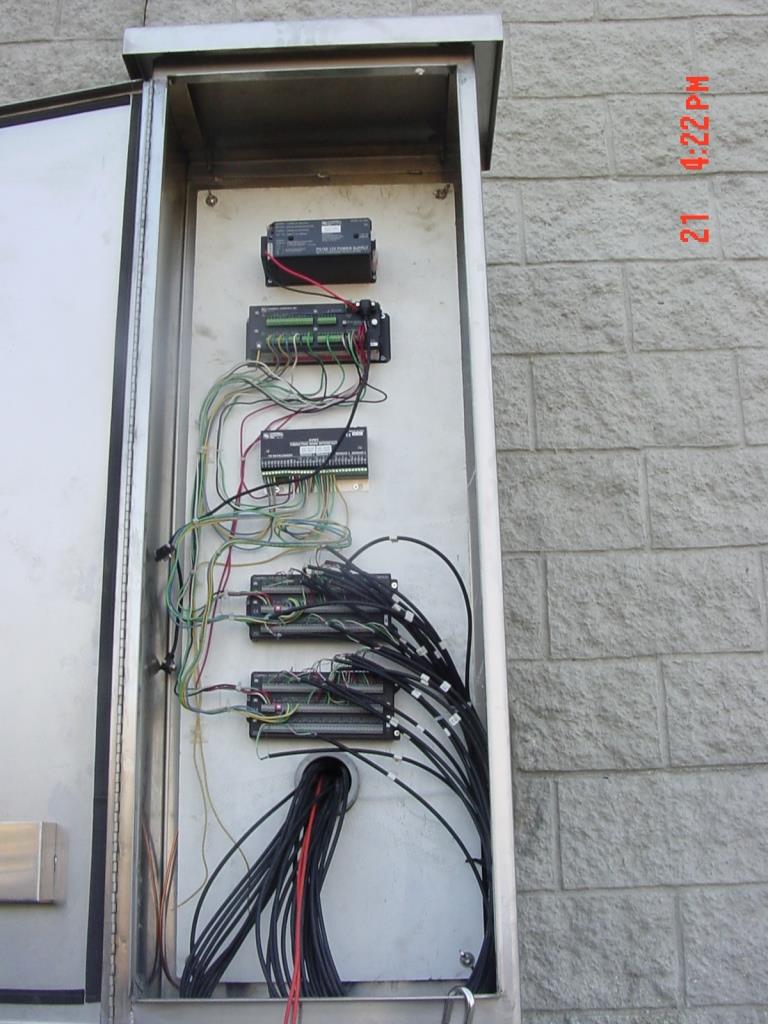
Wall 207 instrumentation cabinet.
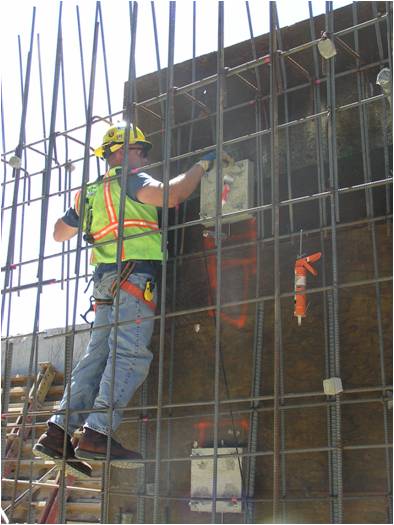
Pressure cell placed in retaining wall.
Temperature Sensor Installation
The temperature sensors were installed directly into the TDA approximately three feet from the wall and at three different heights in order to monitor the temperature of the TDA fill.
Tilt Meter Installation
Four tilt meters were installed along the exterior side of the retaining walls (opposite from the backfilled side).
TDA Placement
Before placement of TDA began, an eight-ounce, non-woven geotextile fabric was placed on the subgrade and the cut slope. As the TDA was installed, the edge of the fabric along the cut slope was also raised until the TDA installation was complete. This secured the fabric on the subgrade and up the cut slope, ensuring that the soil was separated by the geotextile from the TDA. Before the cover soil and final two feet of TDA was placed, another geotextile piece was installed along the backfill side of the wall for anchorage.

Tilt meter being installed in wall.
For the Wall 119, about 837 tons of TDA were placed at an approximate rate of 90 tons per working day. The TDA was transported in 40-foot walking floor trailers. After each one-foot lift was placed (approximately 2-3 truckloads), the material was then compacted with a 10-ton smooth-drum vibrating roller. A minimum of six passes by the compactor were observed and recorded by the onsite construction manager.
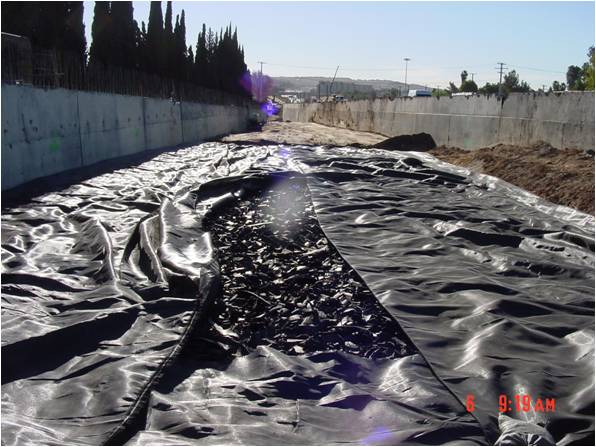
TDA backfill wrapped in geotextile fabric.

TDA placement with standard heavy equipment.
Sonoma Mountain Road (Mendocino County)
Tire Derived Aggregate as Landslide Remediation/Slope Stabilization
The Sonoma Mountain Road project site is located in Sonoma County in the town of Glen Ellen. This was the second of two projects that partnered Sonoma County and the California Integrated Waste Management Board (CIWMB) (now the Department of Resources Recycling and Recovery, or CalRecycle) in an effort to expand the county’s knowledge and use of tire-derived aggregate (TDA) in slide repair projects. During this project the county used the knowledge it had learned from the design assistance the CIWMB previously provided for Geyser Road slide repair project to design and implement a similar repair here using County resources.
Previously, approximately 600 feet of Sonoma Mountain Road failed due to a landslide, requiring the slope and roadway to be reconstructed in the 1980’s. The landslide was caused by a combination of weak native soil and excess ground moisture (saturated conditions).
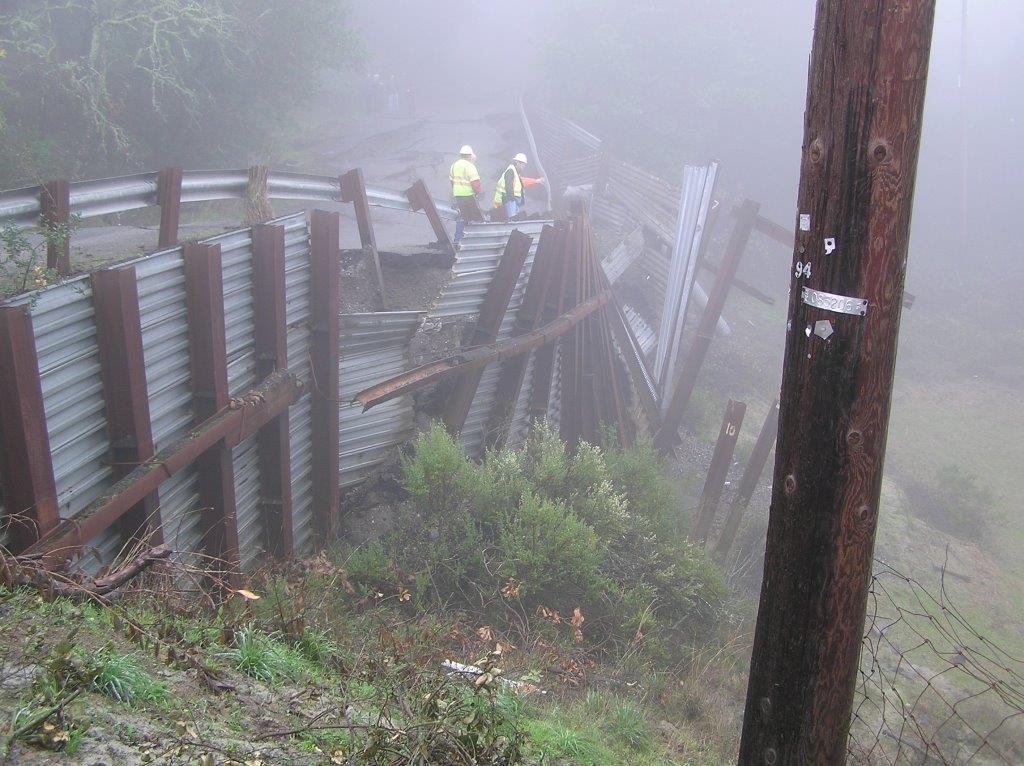
Sonoma Mountain road failure.
Sonoma County had initially designed the repair of the landslide-damaged road section using a retaining wall approach. The County constructed a 20-foot high corrugated steel wall reinforced with steel “H” piles that were driven into the slope. The project failed as a result of heavy rains in December 2008 and was eventually closed in January 2009.
During the summer of 2009, the CIWMB, working with Sonoma County, provided design and construction management services to redesign and then rebuild the damaged road section using TDA as a lightweight backfill. This resulted in a smaller excavation and thus a less expensive repair. This project used approximately 330,000 waste tires and saved the county of $300,000.
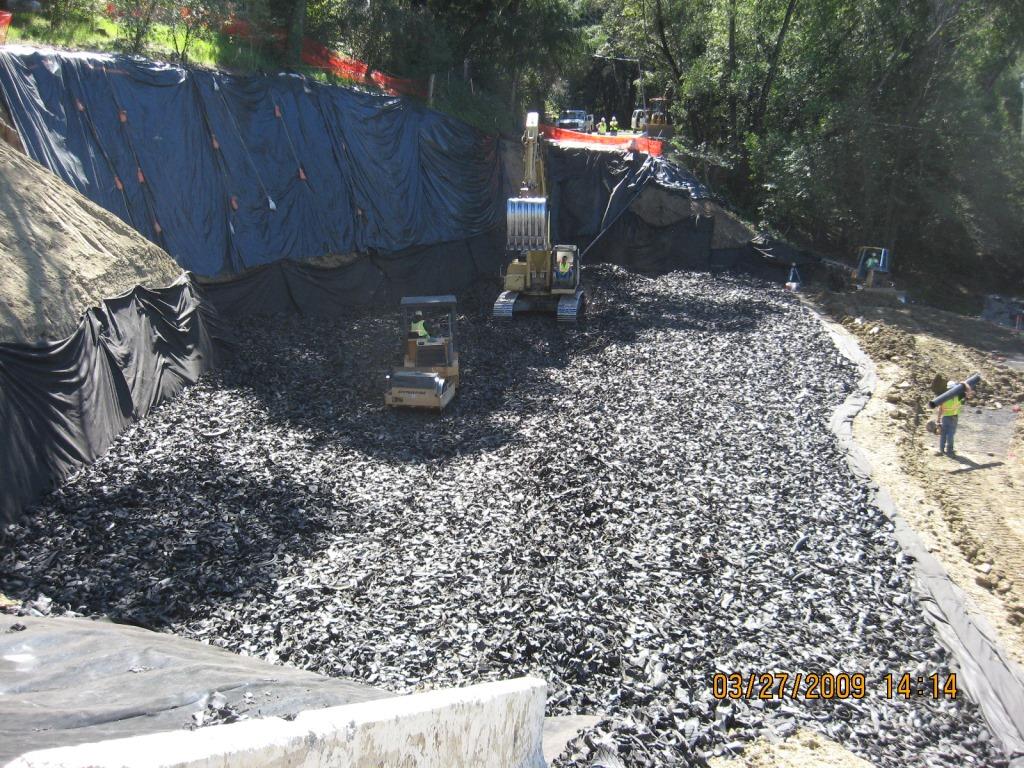
TDA placement in progress.
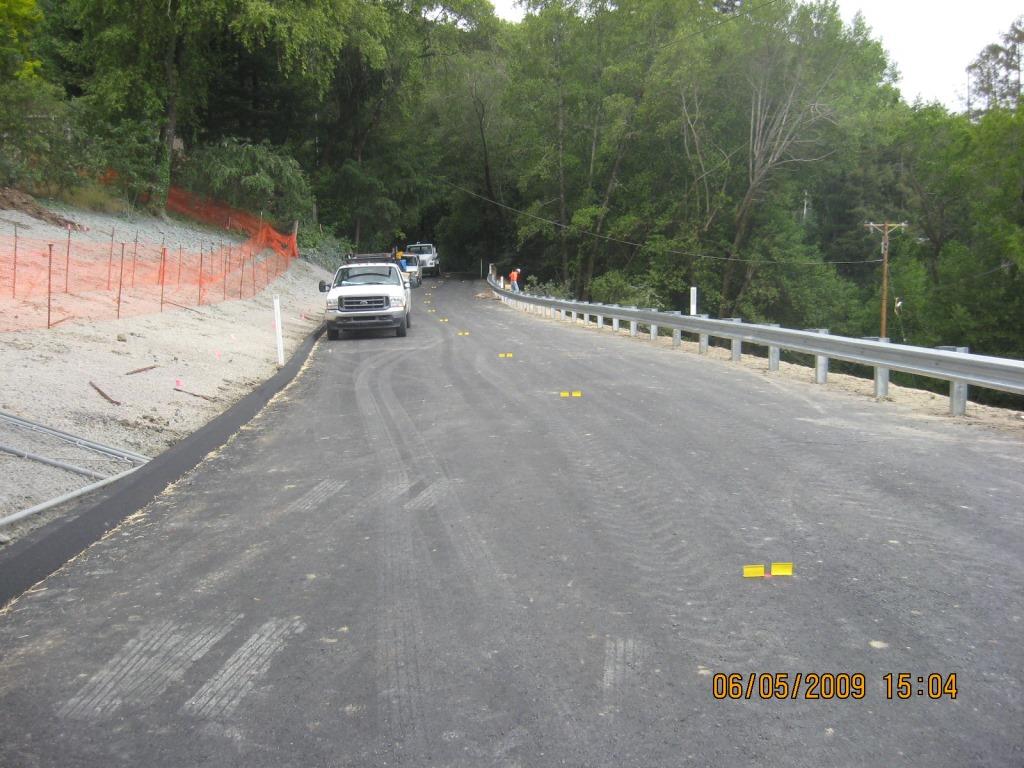
Finished repair project.
For more information contact: Tire Management Program Hotline, WasteTires@calrecycle.ca.gov
